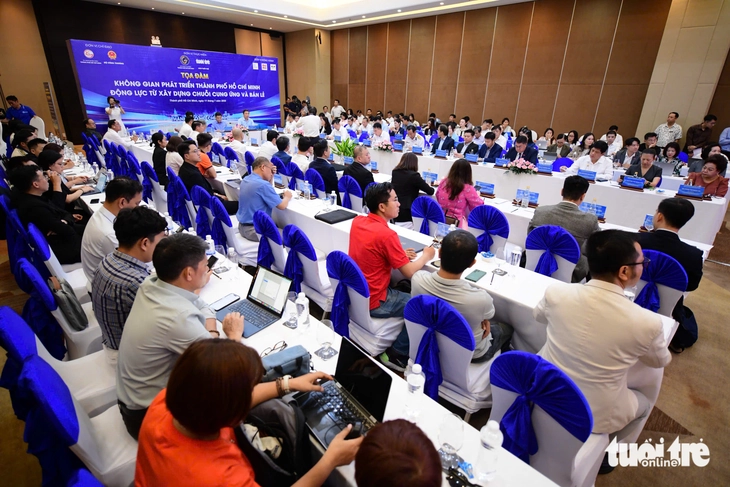
The seminar was attended by hundreds of delegates - Photo: QUANG DINH
Under the direction of the Ho Chi Minh City People's Committee, on the afternoon of July 11, in Vung Tau ward, the Ho Chi Minh City Department of Industry and Trade and Tuoi Tre newspaper organized a discussion "Ho Chi Minh City's development space - driving force from building supply chains and retail".
The seminar was attended by Informa Markets Vietnam Company, Mobile Online Services Joint Stock Company (M-Service) and WTC Binh Duong Company Limited.
Opening the discussion, Mr. Bui Ta Hoang Vu - Director of the Department of Industry and Trade of Ho Chi Minh City happily said that great opportunities are opening up for the city's trade sector when merging 3 provinces and cities.
He also recognized the weaknesses of this industry in the megacity of Ho Chi Minh City. That is, lack of synchronization, lack of connection, and fragmentation. That is, e-commerce develops rapidly but also lacks connection. In addition, there is a lack of product connection.
Taking advantage of waterways to reduce logistics costs for the megacity of Ho Chi Minh City
To develop the commercial sector for the megacity of Ho Chi Minh City, one of the important factors is to reduce logistics costs. Commenting on this story, Mr. Le Kim Cuong - Deputy Director of Logistics Service Center - Saigon New Port Corporation suggested that there must be a solution for transporting goods by waterway, not focusing on roads because currently, it takes 5-7 days for containers to be transferred from Cai Mep to the rear ICDs.
Specifically, Mr. Cuong suggested reviewing Ho Chi Minh City's ports to find ways to reuse the Dong Nai River and the upper Saigon River, using barges to transport containers, because the cost of transporting by barge is quite low compared to road transport, reducing road congestion and reducing CO2 emissions. "There needs to be policies on land prices and taxes, these are priority subjects in terms of policy for infrastructure development.
Without policies, businesses will have difficulty developing policies. Reduce customs paperwork and digitize procedures to make them faster. If logistics costs can be reduced, it will greatly help improve the competitiveness of Ho Chi Minh City in particular and the country in general," said Mr. Le Kim Cuong.
New Ho Chi Minh City compared with Shanghai
According to Mr. Do Thien Anh Tuan, Fulbright School of Public Policy and Management, after merging with Binh Duong and Ba Ria - Vung Tau, the development space of Ho Chi Minh City has been expanded like never before. The new Ho Chi Minh City has a complete foundation to move towards the model of a leading shopping - consumption center in East Asia.
Ho Chi Minh City has now become a multi-polar metropolis, combining a traditional administrative - financial - consumer center with a dynamic industrial - logistics - seaport area.
In terms of scale, the total geographical area of the new city is about 6,772 km², more than 3.2 times the area of the old Ho Chi Minh City, about 25 times that of Kuala Lumpur or Taipei, about 10 times that of Singapore, Jakarta, Seoul; 4.3 times that of Bangkok and equivalent to Shanghai, putting Ho Chi Minh City in the group of largest urban areas in East Asia.
The official population has reached 14 million people, accounting for about 13.5% of the country's population, equivalent to Tokyo, surpassing Jakarta, which creates a huge domestic consumer market. In terms of economic scale, Ho Chi Minh City has only reached about 120 billion USD GRDP, equivalent to 23.5% of the country's GDP, affirming its role as a locomotive and leading economic concentration center in Vietnam.
The sharp increase in population, income and living standards after the merger significantly increased the city's purchasing power and consumption capacity.
Ho Chi Minh City is the leading locality in the country in terms of total retail sales, with more than 1.2 million billion VND, now supplemented by Binh Duong and Ba Ria - Vung Tau.
The population structure of the new Ho Chi Minh City also has the characteristics of high urbanization, with the middle and near-middle class accounting for a large proportion.
According to Mr. Tuan, from a market perspective, Ho Chi Minh City after the merger has all the conditions to become the most diverse consumer and service center in Vietnam, playing the role of both a distribution hub and a leader of national consumer tastes.
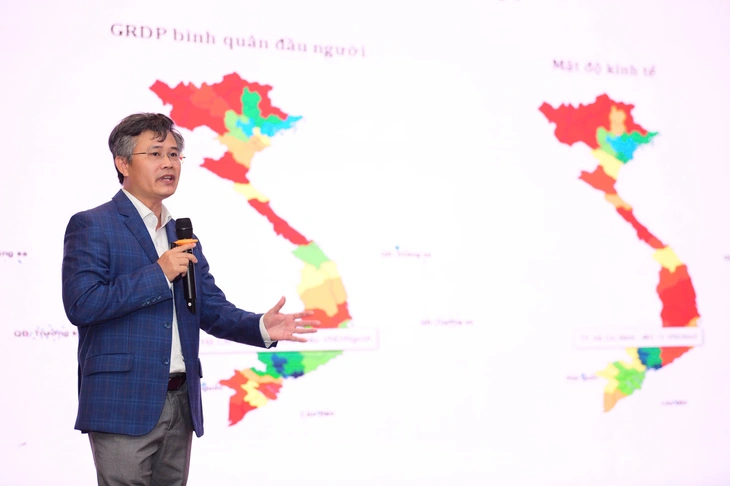
Dr. Do Thien Anh Tuan - Fulbright School of Public Policy and Management presented a paper on Positioning the commercial role of Ho Chi Minh City after the merger - Analyzing the scale of production, consumption and the ability to participate in the national value chain - Photo: QUANG DINH
At the regional level, Ho Chi Minh City has begun to enter the group of megacities with the role of regional trade and logistics centers, comparable in role to important cities such as Singapore, Bangkok or Shanghai.
Ho Chi Minh City currently owns a dense network of shopping malls, supermarkets, wholesale markets and a modern retail distribution system. The integration with Binh Duong adds to its role as an industrial base with warehouses and logistics clusters in Song Than, VSIP, Bau Bang...
Meanwhile, Ba Ria - Vung Tau offers the Cai Mep - Thi Vai deep-water seaport system, capable of connecting directly with international shipping routes.
Mr. Tuan believes that the connection between these three localities will allow Ho Chi Minh City to develop a closed trade, logistics and production ecosystem, flexibly meeting both domestic and export markets.
Ho Chi Minh City has long been the largest e-commerce center in the country. Ho Chi Minh City has the perfect foundation to become an emerging shopping and consumption center model in Southeast Asia, even East Asia.
"HCMC must move quickly and strongly to lead the country's trade sector," said this expert.
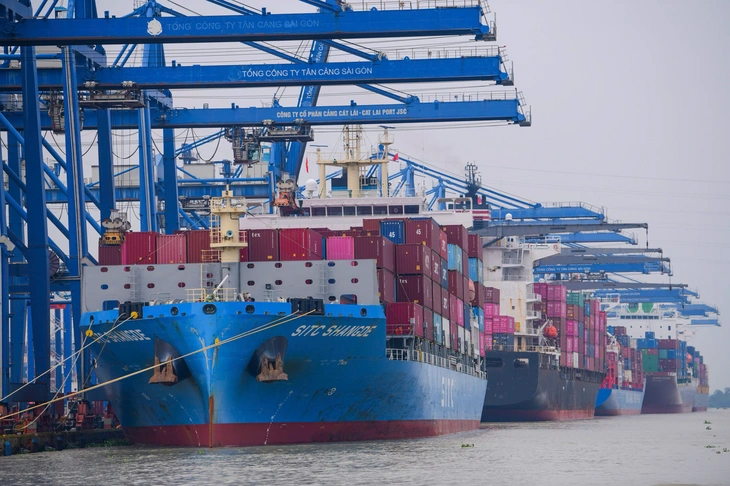
Import and export goods at Cat Lai port, Ho Chi Minh City - Photo: QUANG DINH
Subsequent presentations by digital transformation experts, businessmen, and market researchers pointed out the great advantages of the megacity of Ho Chi Minh City in goods consumption. Mr. Le Hoang Long - representative of NielsenIQ Vietnam Co., Ltd. - said that the purchasing power of Ho Chi Minh City (old) is much larger than that of Hanoi. And now, with the addition of two merged provinces, it will be much larger.
Mr. Long proposed that to exploit the purchasing power of the new super city of Ho Chi Minh City, it is necessary to pay attention to "local consumption characteristics", "supply chain saturation" and "consumption differentiation". And there is a difference in consumption of goods between the old Ho Chi Minh City and the two remaining provinces.
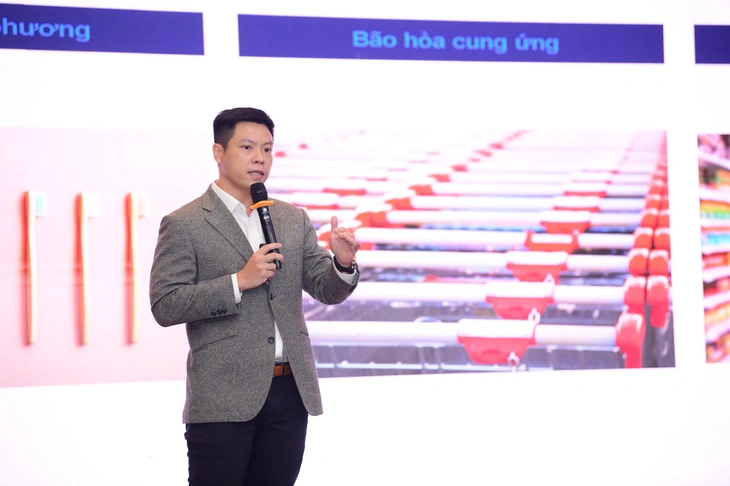
Mr. Le Hoang Long - Director of Retail, NielsenIQ Vietnam Co., Ltd. presented a paper on Consumer data and retail trends in Ho Chi Minh City - Opportunities to shape the supply chain - Photo: QUANG DINH
Ms. Tran Mong Tuyen, Senior Project Manager, Informa Markets Vietnam, also gave some interesting information at the seminar. That is to develop the exhibition industry because this industry plays an important role in consumption and shopping because of its spreading effect.
This industry in Ho Chi Minh City and Vietnam still lacks international standard venues and is moving towards small scale and lacks linkages. Therefore, state support is needed for exhibitions to become a key economic sector.
"HCMC has a lot of potential to become a major exhibition center in the region and needs a synchronous plan to connect the metro, airport with the exhibition," said Ms. Tuyen.
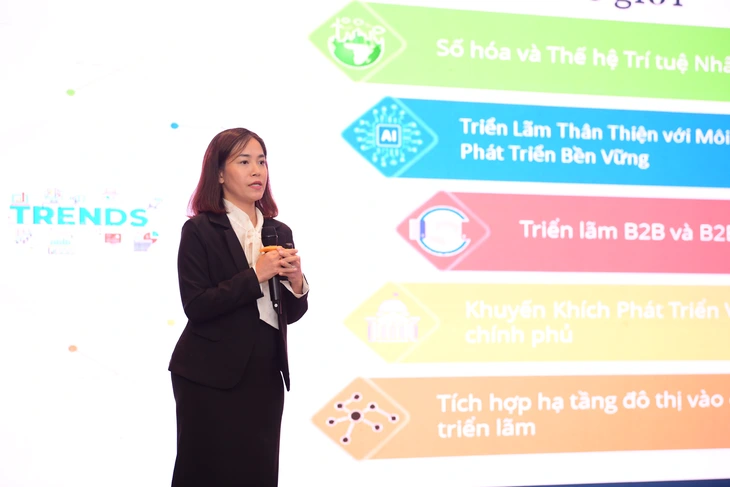
Ms. Tran Mong Tuyen - Senior Project Manager, Informa Markets Vietnam, presented a paper on the Exhibition in the new urban space: From industrial capital to shopping center and connecting international markets - Photo: QUANG DINH
Meanwhile, Mr. Phan Huy Chi - Senior Advisor of Vietnam Commodity Exchange - pointed out the very current situation of Vietnamese goods. That is, "many inspections and tests but the quality of goods is not guaranteed". And the Commodity Exchange plays an important role in connecting supply and demand, preventing price risks.
"The space after the merger of Ho Chi Minh City is very large with seaports, logistics systems... Therefore, it is necessary to redesign the commercial development space" - Mr. Chi proposed.
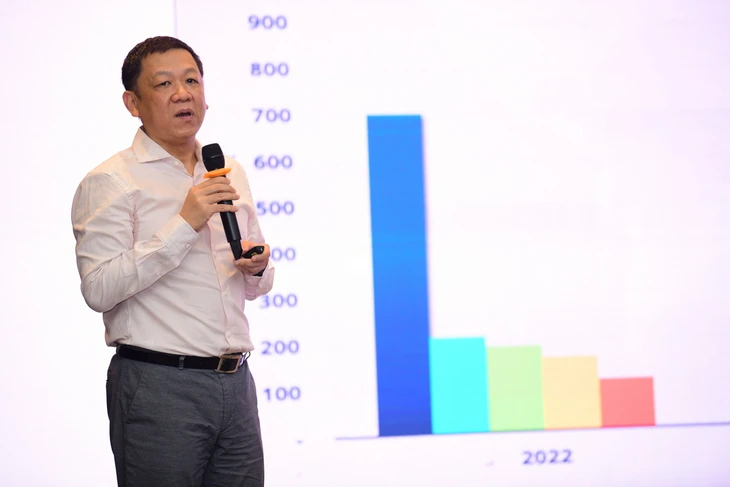
Mr. Phan Huy Chi - Senior Advisor of Vietnam Commodity Exchange - presented a paper on Modern Trade and the central role of Commodity Exchanges - Photo: QUANG DINH
Need to exploit waterway logistics well
Mr. Truong Tan Loc - Vice President of Ho Chi Minh City Logistics Association (HLA) proposed to create a mechanism through technology, so that the new Ho Chi Minh City can be equivalent to Singapore, Hong Kong, and a free trade zone.
Cai Mep Thi Vai Port in the old Ba Ria - Vung Tau, the port in Binh Duong and the ports in Ho Chi Minh City must be one, never thought of before but must be thought of now, to create common resources.
Certainly, Ho Chi Minh City must be an international transit port cluster, Cai Mep Thi Vai, Can Gio must be further connected, and connect with other ports. In addition, more inland waterway ports along the rivers must be invested and built.
There are many connections between Vung Tau and the old Ho Chi Minh City but there are still many problems. If we promote waterway connections between the three former localities, it will be a great strength that no other country has.
Accordingly, it is necessary to invest in the outer river system, large barges, inland waterway ports... only then can Ho Chi Minh City take off, reducing pressure on congested roads.
Barges and inland waterway ports cannot keep up with transportation. In the near future, consumption will increase sharply. If inland waterway ports are well exploited and research on connecting with roads will be a great advantage.
In the discussion section, answering the question of journalist Tran Xuan Toan - Deputy Editor-in-Chief of Tuoi Tre newspaper - about comparing the commercial scale of the new Ho Chi Minh City with Bangkok and Singapore, Mr. Do Thien Anh Tuan once again affirmed the advantages of Ho Chi Minh City.
It is an urban area with a young population, dynamic economy, and a large middle class, so the consumption potential and consumption speed are extremely large. In addition, the cost of consumption is cheaper, a big advantage compared to urban areas of surrounding countries when they are saturated in consumption.
"HCMC has three major factors: huge internal demand from the people, purchasing power of immigrants and tourists going shopping," Mr. Tuan said.
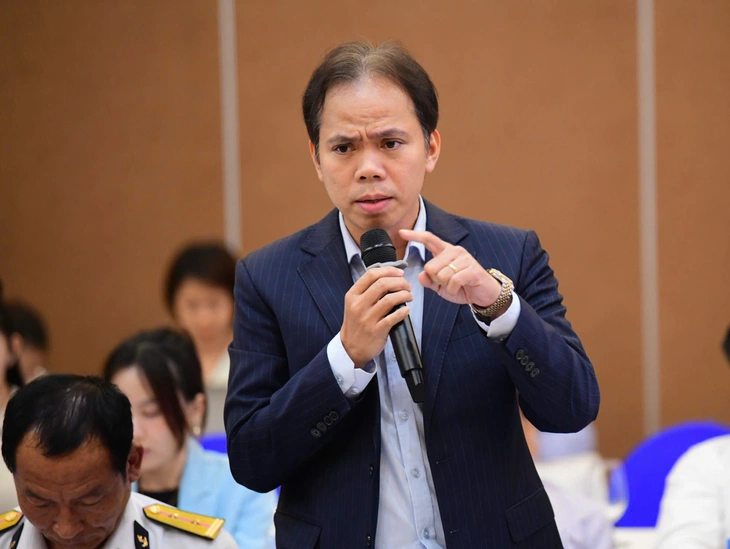
Mr. Truong Tan Loc - Vice President of Ho Chi Minh City Logistics Association (HLA) - Photo: QUANG DINH
Positioning the commercial role of the new Ho Chi Minh City
The program was attended by hundreds of delegates representing central and local ministries and branches; leading experts in the field of trade, relevant associations; representatives of corporations, general companies, and enterprises operating in the fields of production, distribution, logistics, e-commerce, retail, investment in trade infrastructure, logistics, etc.
The seminar has important and practical significance for the trade, supply chain, and retail sectors of the megacity of Ho Chi Minh City in the new era.
In-depth, technical, and practical discussions will be presented by economic and trade experts and market research enterprises. The seminar will focus on the following topics:
- Positioning the commercial role of Ho Chi Minh City after the merger;
- Consumer data and retail trends in Ho Chi Minh City;
- Restructuring from traditional retail channels;
- Exhibition fair in new urban space;
- Modern commodity and trade exchange.
With the above practical and strategic topics, the detailed contents of the discussion session will provide practical proposals, solutions and suggestions to build a modern, synchronous and effective commercial space for the megacity of Ho Chi Minh City in the new development stage.
Thereby improving the quality of commercial space planning, developing smart retail infrastructure, perfecting integrated supply chains and promoting regional linkage models.
The main issues discussed at the seminar include:
Orientation of planning distribution system according to multi-center urban model; Solutions to modernize and digitize traditional markets; Reorganize the network of warehouses - regional distribution centers; Develop e-commerce; Strengthen links with seaport systems, industrial parks and perfect retail development policies suitable for new consumer needs.
Tuoi Tre Online continues to update the content of the discussion.
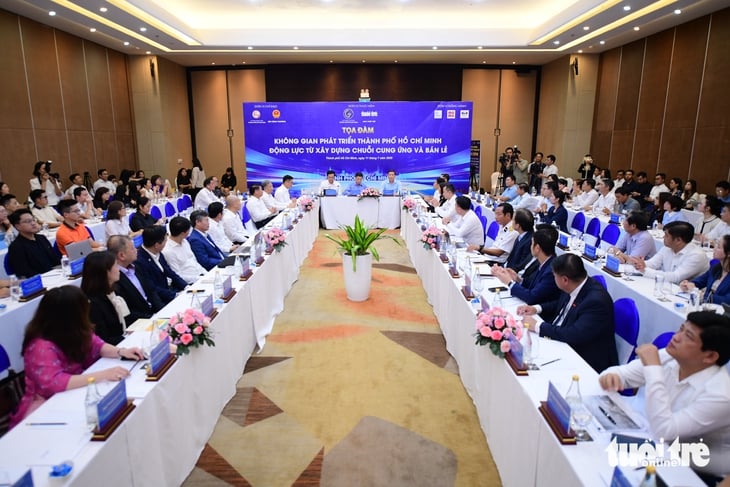
Scene of the discussion on the afternoon of July 11.
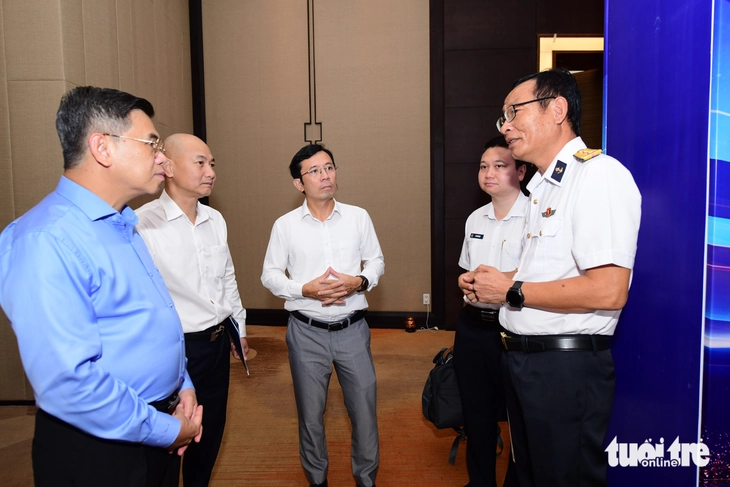
Mr. Nguyen Van Dung, Vice Chairman of Ho Chi Minh City People's Committee (left cover) talks with delegates - Photo: Q.DINH
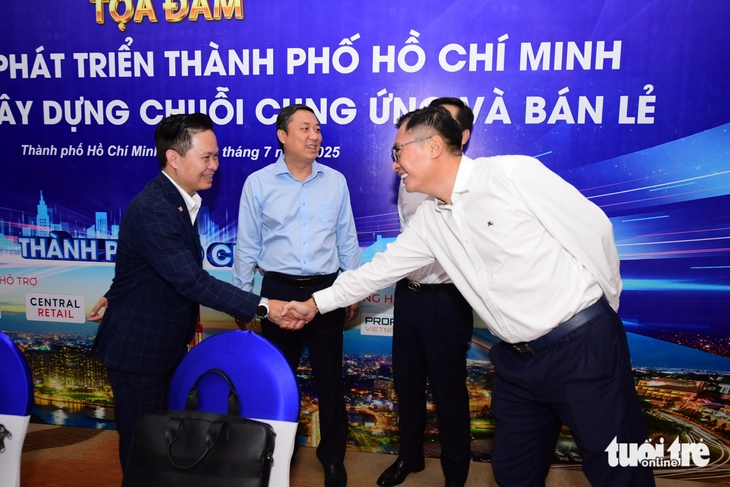
The seminar took place in Vung Tau ward and attracted many businesses to participate and contribute opinions.
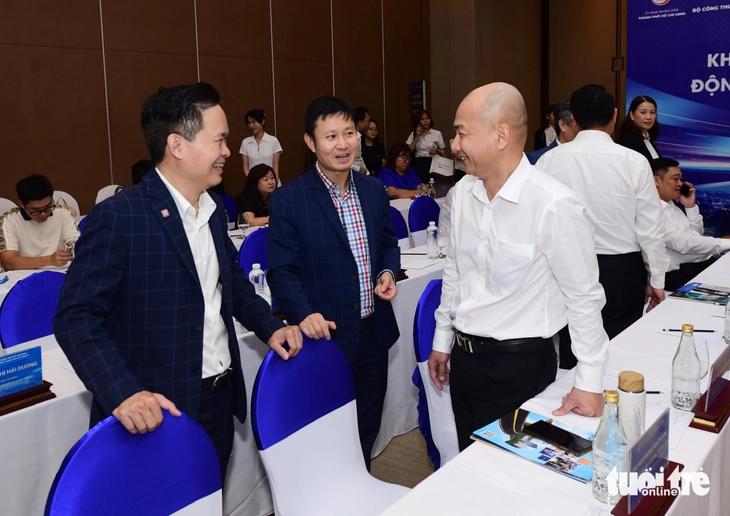
Representatives of many departments, branches and businesses met at the seminar - Photo: Q.DINH
Source: https://tuoitre.vn/tp-hcm-huong-den-mo-hinh-trung-tam-mua-sam-tieu-dung-moi-noi-cua-khu-vuc-2025071113515465.htm




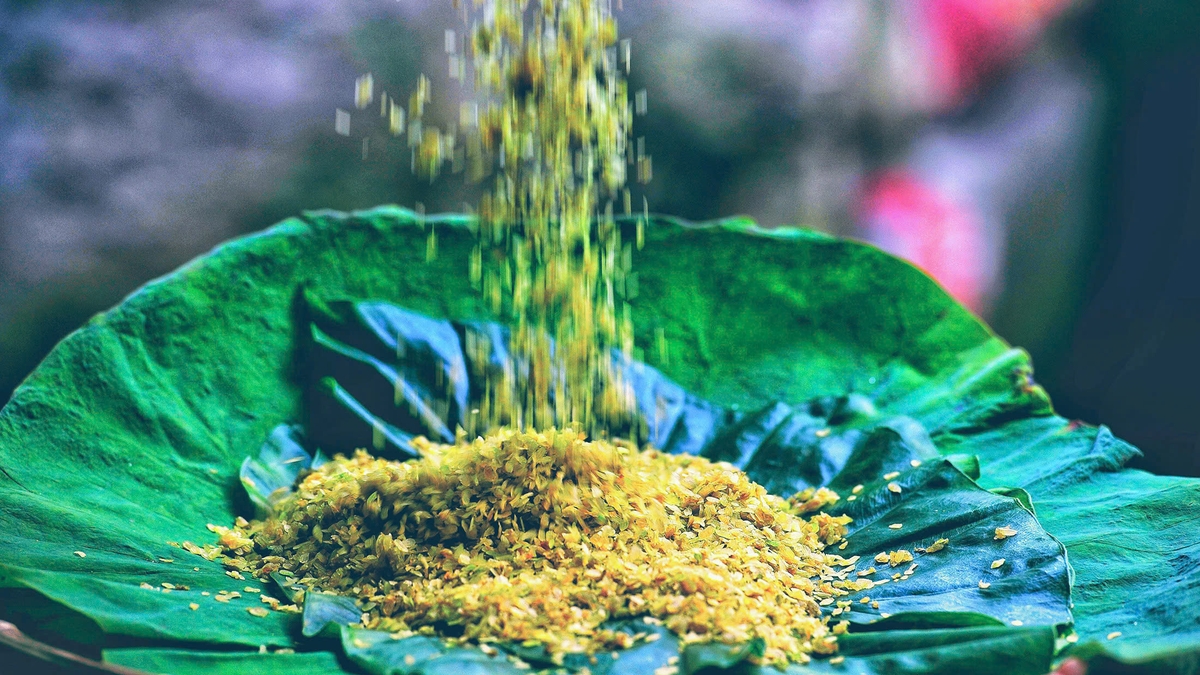

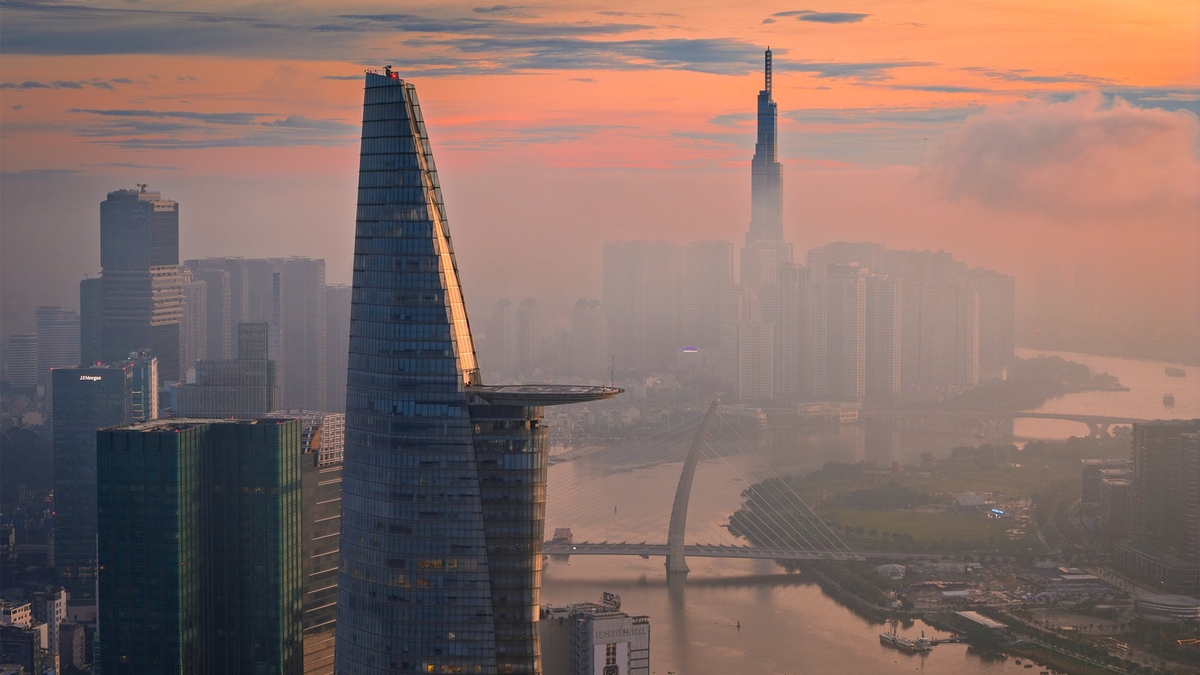
![[Photo] Solemn opening of the 1st Government Party Congress](https://vphoto.vietnam.vn/thumb/1200x675/vietnam/resource/IMAGE/2025/10/13/1760337945186_ndo_br_img-0787-jpg.webp)
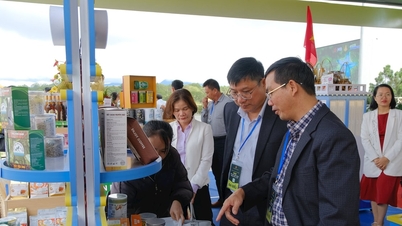






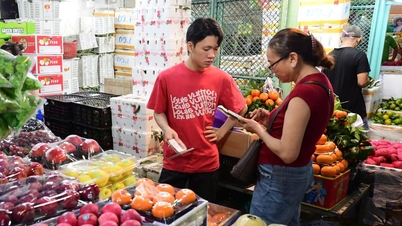

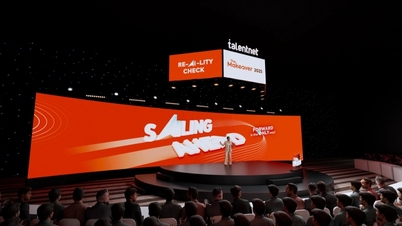





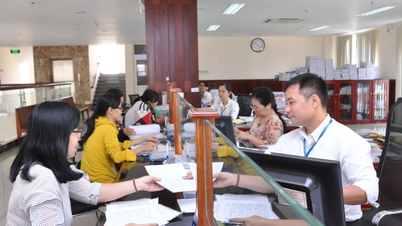












![[Photo] General Secretary To Lam attends the opening of the 1st Government Party Congress](https://vphoto.vietnam.vn/thumb/1200x675/vietnam/resource/IMAGE/2025/10/13/1760321055249_ndo_br_cover-9284-jpg.webp)
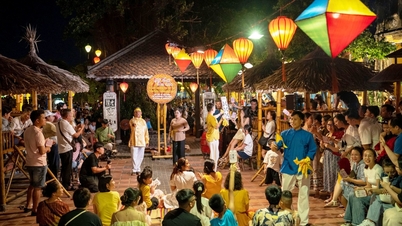


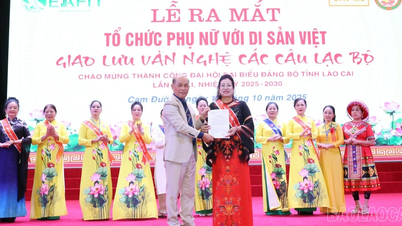

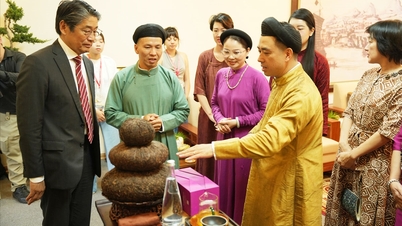

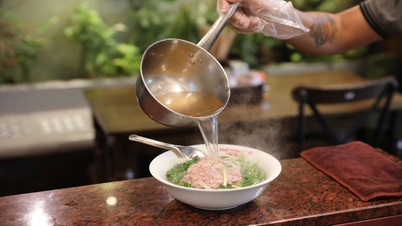



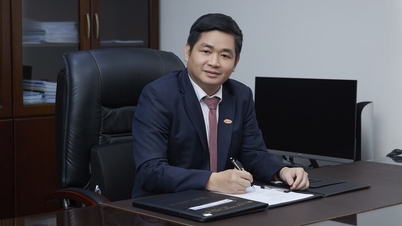
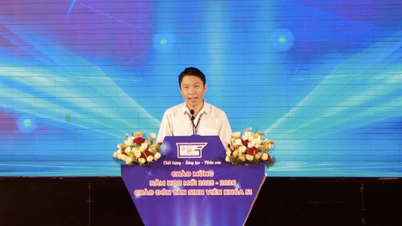



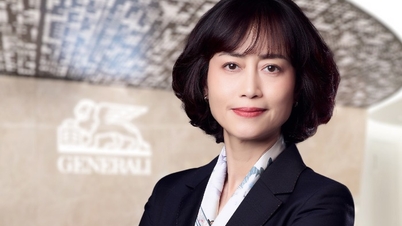

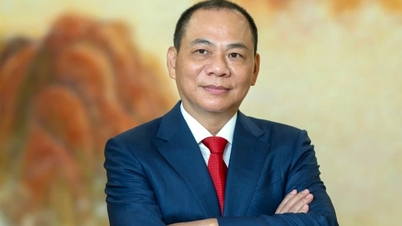
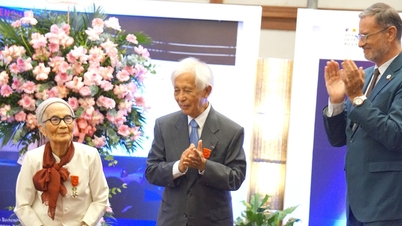


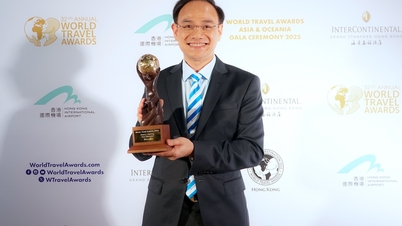




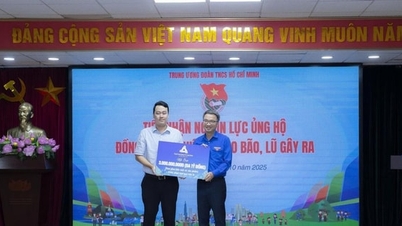
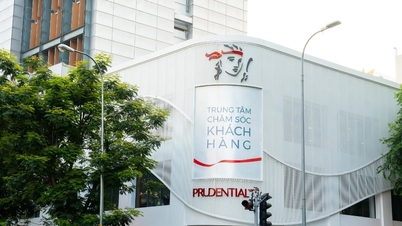

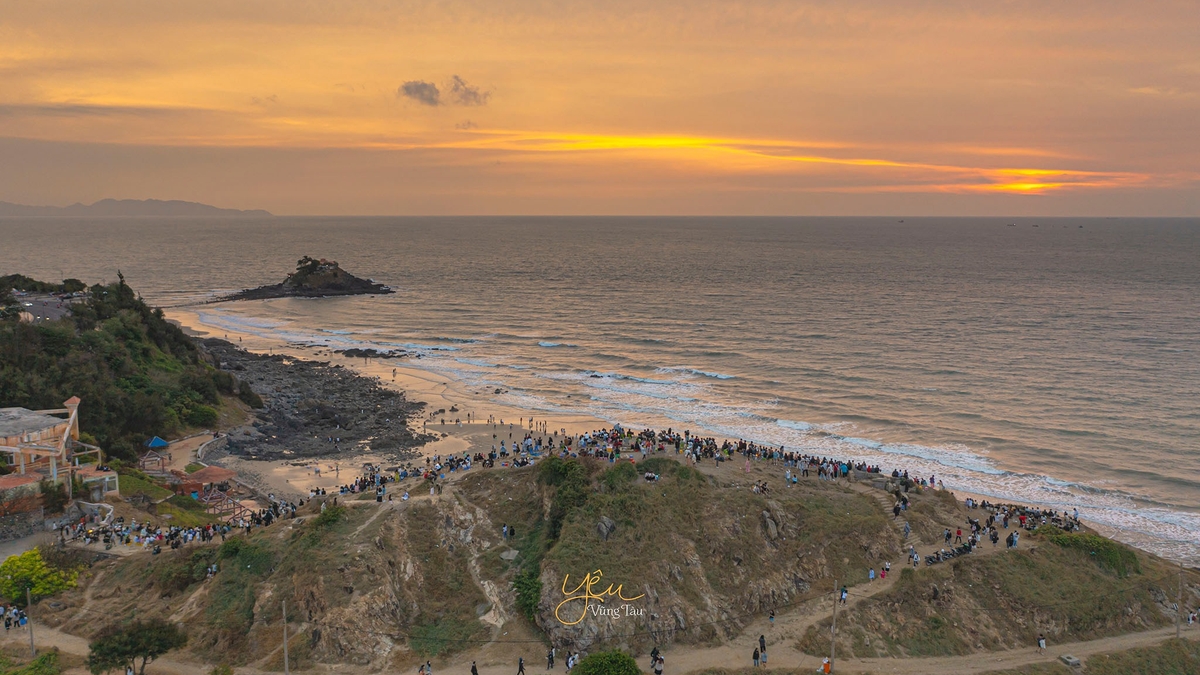





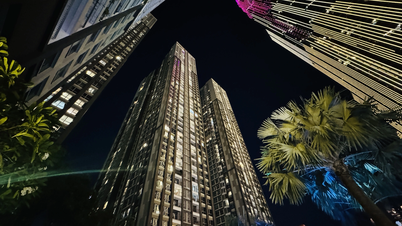






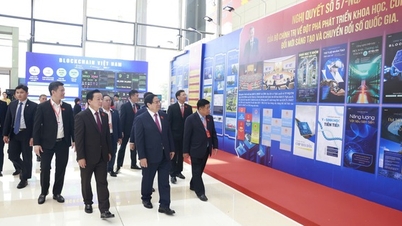
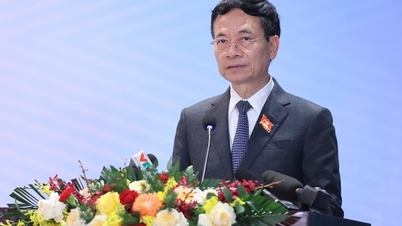
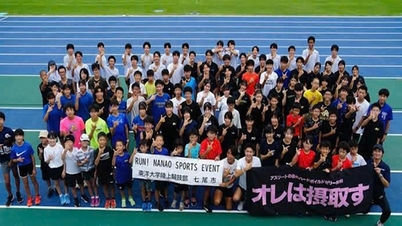

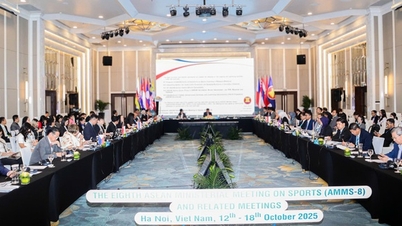
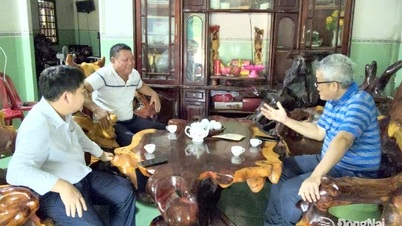



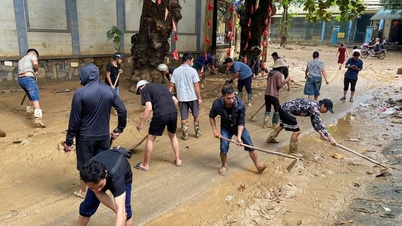

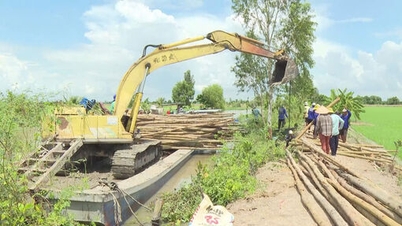


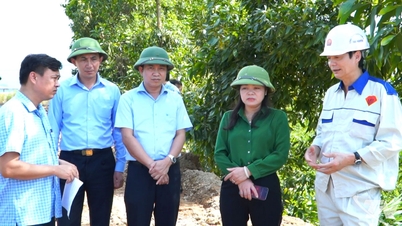

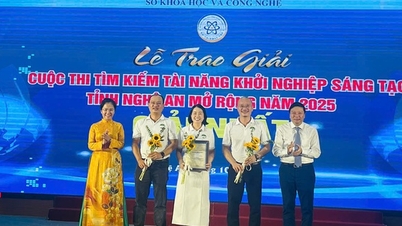


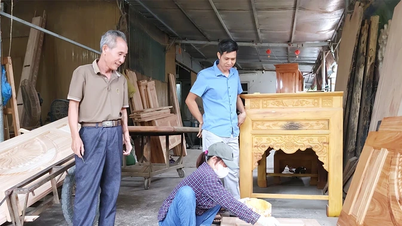






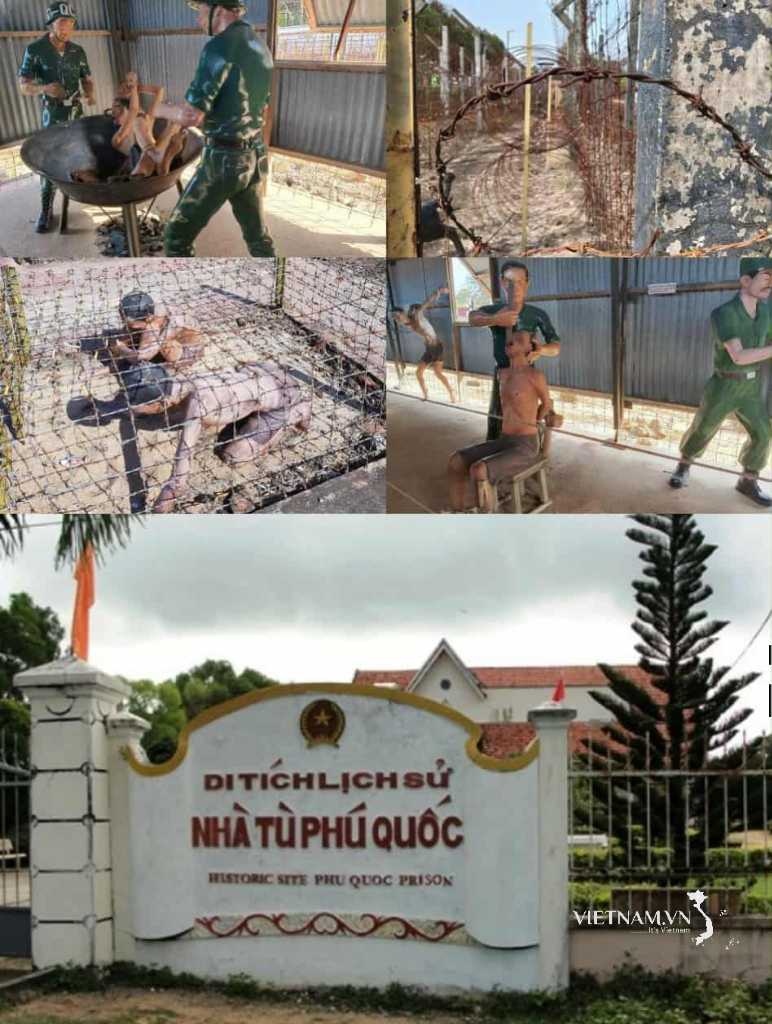



Comment (0)